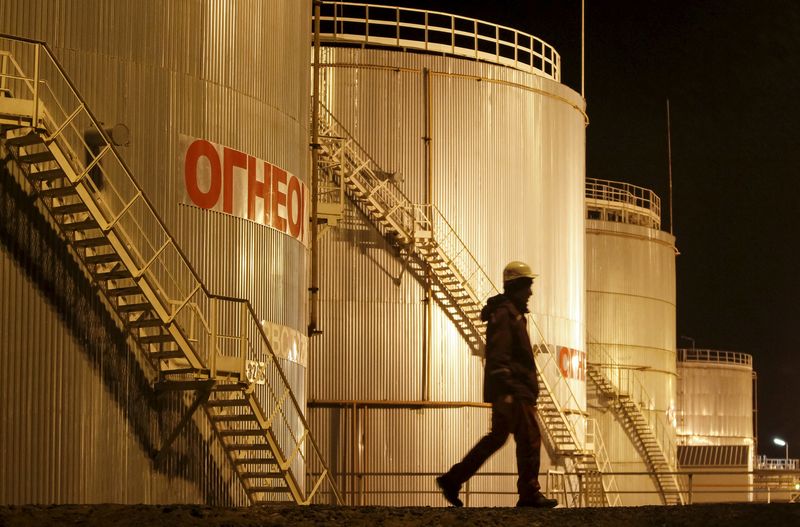By Geoffrey Smith
Investing.com -- Crude oil prlces fell sharply on Friday morning in New York amid a weak round of economic data and a sense of anticlimax after President-elect Joe Biden announced his near-term spending plans. A lackluster opening to the fourth-quarter earnings season also kept broader sentiment toward risk assets cool.
By 11:10 AM ET (1610 GMT), U.S. Crude futures were down 3.1% at $51.91 a barrel, on course to end the week almost exactly where they started it, while Brent futures were down 3.0% at $54.74 a barrel.
U.S.Gasoline RBOB Futures were down 1.8% at $1.5265 a gallon.
Earlier, the Commerce Department had announced a 0.7% drop in retail sales in December, a second straight monthly drop that underscored the near-term challenges of mastering the pandemic. Concerns about the slow rollout of vaccines - widely seen as key to restoring normal life - have risen this week among widespread reports of administrative problems and, in countries such as France and Poland, public skepticism. They were stoked further on Friday as Pfizer (NYSE:PFE) and BioNTech said that deliveries of its vaccine to Europe would be delayed for the next month while it expands production capacity.
The news comes against a backdrop of infection curves that are only just starting to flatten in the U.S. and which are still in the early stages of decline in Europe. Google (NASDAQ:GOOGL) mobility data for most large western countries are already clearly down since the start of the year, and any further signs of lockdowns being extended will threaten the 'reflation trades' that were put on in early anticipation of a strong economic rebound this year.
There is also increasing unease over the outlook for Chinese demand, one of the rare bright spots of a weak global market that still needs millions of barrels of production capacity to be idled. China has locked down some 30 million people this week in order to contain a new outbreak of Covid-19 in the Hebei region near Beijing. Any extension of the lockdown to Beijing itself could have much bigger effects on current Chinese demand.
Newswire reports suggested also that prices were coming under pressure from hedging by U.S. oil producers, trying to lock in current price levels for later in the year, scarred by the memory of last year's volatility. For now, cooperation between Russia and the Organization of Petroleum Exporting Countries is preventing any return of such volatility, but sentiment was not helped on Friday by a Reuters report indicating that Russia had increased its production by an average of 150,000 barrels a day so far this month - about 20% more than foreseen by the producer group's agreement last December. The news appears to raise the risk of a Saudi backlash against Russian free-riding the next time the group's output policy comes up for review.
